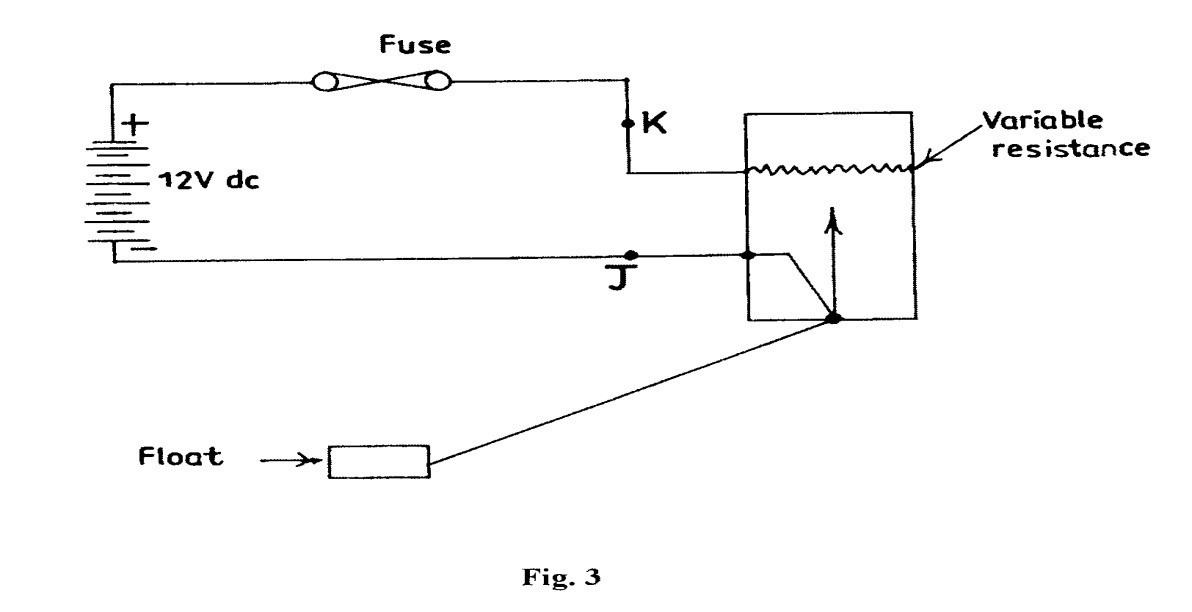Question 3
AIM: To determine the working principle of a fuel gauge.
Table 3

(a)Connect the circuit as shown in Fig. 3.
(b)Connect the multimeter (set to resistance range to point J and K)
(c)Ask the supervisor to check the circuit connection.
(d)Lift the float bulb upward to maximum position and record the reading on the multimeter in your answer booklet.
(e)Let the float bulb move downwards to minimum position and record the reading on the multimeter in your answer booklet.
(f)Comment on your reading in relation to the fuel level in fuel tank.
(g)Remove the positive connection on the battery and repeat steps (d) and (e).
(h)Comment on your readings in step (g).
Observation
The candidates were expected to connect the circuit as shown in Fig.1, measure and record in Table 3. And the expected answers were:
(d) Multimeter reading when the float bulb is lifted upward to maximum position
= 0.08 – 0.16 ohms.
(e) Multimeter reading when the float bulb is lifted downwards to minimum position
= 8.91 – 12.1 ohms.
(f) The sender unit increases in resistance as the fuel level drop, and decreases the resistance as fuel level increases.
Full tank = low resistance.
Empty tank = Higher resistance.
(g) No reading.
(h) There is an opening in the circuit as a result of the removal of the positive connection on the battery. So, because of the open circuit, there is no flow of current in the circuit.
Many candidates provided high value in volts instead of a low range 0.08 – 0.16 in ohms. Only a few candidates showed an understanding of the relationship between resistance and fuel tank level.
